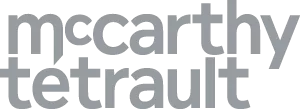- with Senior Company Executives, HR and Finance and Tax Executives
- with readers working within the Banking & Credit, Healthcare and Property industries
New reporting, verification, and other compliance obligations are now in force for money services businesses ("MSBs"), title insurers, real estate professionals, and acquirers of private automated banking machines ("ABMs").
In our previous client alert, "Canada's AML Expansion Comes Into Effect Sooner than Expected on April 1, 2025", we noted that certain anti-money laundering/anti-terrorist financing ("AML/ATF") legislative amendments came into force earlier than initially planned, on April 1, 2025. Other changes, however, retained their original effective date of October 1, 2025.
We have elaborated on these amendments to the Proceeds of Crime (Money Laundering) and Terrorist Financing Act (the "PCMLTFA") and its regulations, which continue the trend of
- expanding enforcement powers of the Financial Transactions and Reports Analysis Centre of Canada ("FINTRAC");
- adding AML/ATF obligations for existing reporting entities;
- extending the regime to apply to new sectors;
- further integrating elements of sanctions compliance into Canada's AML/ATF regime; and
- closing regulatory gaps by strengthening alignment with Financial Action Task Force ("FATF") standards.
Agents or Mandataries of Money Services Businesses
These new requirements strengthen oversight of agents and mandataries of money services businesses.
Domestic and foreign MSBs must now verify the eligibility of every agent or mandatary that provides services on their behalf. MSBs must complete this verification before engagement and again within 30 days after every second anniversary of the most recent verification. They must terminate any relationship where an agent is found to be ineligible.
The verification must include criminal record checks for all key individuals. For agents that are entities, MSBs must obtain checks for the chief executive officer, president, directors, and anyone owning or controlling at least 20% of the entity. For agents who are individuals, the MSB must obtain that person's own check. Each record must be issued by a competent authority within six months of review and retained for at least five years.
MSBs that engaged agents before October 1, 2025, must complete their initial verifications by October 1, 2027.
Non-compliance is now an offence under the PCMLTFA, punishable on summary conviction by a fine of up to $250,000 or imprisonment for up to two years, or on indictment by a fine of up to $500,000 or imprisonment for up to five years.
Beneficial Ownership Material Discrepancy Report (High Risk)
Reporting entities must now consult Corporations Canada's database when discharging their beneficial ownership requirements for a federal corporation (i.e., a company that is incorporated under the Canada Business Corporations Act ("CBCA")) that the reporting entity has assessed as having a high-risk for money laundering, terrorist activity financing, or sanctions evasion.
This consultation must be conducted when the reporting entity deems the federal corporation as a high-risk either during onboarding or ongoing monitoring. The requirement is to compare the reporting entity's beneficial ownership records against the federal list of individuals with significant control of the entity to ensure there are no "material discrepancies" between the two sources of information.
If this comparison reveals a "material discrepancy" – an inconsistency significant enough to conceal or misstate who owns or controls the corporation – the reporting entity must file a Beneficial Ownership Discrepancy Report with Corporations Canada within 30 days and retain the acknowledgment of submission for five years. Reporting entities may also file a report voluntarily for CBCA corporations not assessed as high risk. If the discrepancy is resolved within 30 days, no report is required.
When a discrepancy prevents confirmation of ownership accuracy, the reporting entity must take additional reasonable measures to verify and document ownership information. These requirements apply to all reporting entities except title insurers.
Identity Verification Using Agents or Mandataries
All reporting entities may now authorize an agent or mandatary to verify the identity of individuals, corporations, and other entities on their behalf.
For individuals, the agent must use one of the prescribed methods: government-issued photo identification, credit-file, or dual-process. For corporations and other entities, the agent must use the confirmation-of-existence method, which involves verifying the entity through official records or public registries.
Before identity verification, the reporting entity must have a written agreement authorizing the agent or mandatary to act on its behalf. It must obtain all information the agent used to verify identity and confirm that the information is valid and current. A reporting entity may also rely on a previous verification performed by an agent, provided the prescribed methods were used and the information remains accurate.
Their compliance programs must describe how they supervise agents or mandataries. Even when an agent performs the identity verification, the reporting entity remains fully responsible for identification and record-keeping obligations.
The amendment modernizes client identification by permitting third-party verification through trusted intermediaries, balancing efficiency with accountability.
Unrepresented Parties in Real Estate Transaction
Real estate brokers and sales representatives must now verify the identity of any unrepresented party to a real estate transaction, in accordance with FINTRAC's client identification requirements for real estate professionals. They must also determine whether a third party is involved, as required under FINTRAC's existing third party determination obligations, and maintain related records.
This amendment closes a long-standing gap by ensuring that both sides of every real estate transactions are subject to identity verification and reducing opportunities for anonymous or concealed property transfers in Canada's real estate market.
New Listed Person or Entity Property Reporting Requirements
Reporting entities now must submit a Listed Person or Entity Property Report ("LPEPR") to FINTRAC when required to disclose property to the Royal Canadian Mounted Police or the Canadian Security Intelligence Service under the Special Economic Measures Act ("SEMA") or the Justice for Victims of Corrupt Foreign Officials Act (Sergei Magnitsky Law) ("Magnitsky Act"). This builds on the scope of the LPEPR obligations from the earlier phase of the regime, in force since March 2, 2025, which introduced LPEPR filings for disclosures under the United Nations Act and the Criminal Code (see our previous client alert, "Canada's New Sanctioned Property Reporting Regime Now in Force").
As we noted in that previous client alert, the obligation to file an LPEPR is triggered whenever a disclosure is required under Canadian sanctions laws. The triggers can vary from one sanctions regime to the next, but can include instances when, for example, a reporting entity is in possession or control of property that they believe is owned or controlled, directly or indirectly, by a sanctioned person, and when a reporting entity has information about a transaction or proposed transaction involving this property. Property includes tangible and intangible assets such as funds, accounts, securities, prepaid products, and virtual currency.
The addition of both SEMA and the Magnitsky Act to the scope of the LPEPR significantly expands the obligation. Both SEMA and the Magnitsky Act identify a large number of individuals and entities as sanctioned persons, bringing in thousands of additional sanctioned persons within the scope of the LPEPR. Further, both SEMA and the Magnitsky Act include a broad deemed ownership rule that deems property of entities controlled by sanctioned persons as property of the sanctioned person. Importantly, these deemed ownership rules use a broad concept of control that goes beyond a simple "50% plus" equity ownership test, and therefore significantly expand the scope of property subject to these obligations. More details on this deemed ownership rule can be found in our prior client alert from when the rule came into force: "Deemed Ownership" Rule Now in Force: Addressing Heightened Canadian Sanctions Risk.
Notably, if the obligation to file an LPEPR is triggered, and there are reasonable grounds to suspect that it relates to money laundering, terrorist financing, or a sanctions evasion offence, the entity must file an LPEPR as well as a Suspicious Transaction Report.
Reporting entities must integrate LPEPR procedures into their compliance programs and retain reports in line with FINTRAC's five-year recordkeeping requirements. As the LPEPR regime is triggered by Canada's current sanctions disclosure obligations, leveraging existing sanctions compliance programs and ensuring that AML and sanctions compliance teams work together to promptly identify, freeze, disclose and report listed property under the consolidated framework will be critical.
Title Insurers
Title insurers are now regulated as reporting entities under the PCMLTFA. A title insurer is any person or entity that provides insurance against losses or defects in title to real or personal property, as defined in the Insurance Companies Act. This inclusion extends AML/ATF oversight to a previously unregulated part of the real estate sector, addressing title fraud and other ownership-related risks.
They must register with FINTRAC where applicable, establish a compliance program, verify client identities, keep prescribed records, and report suspicious and large cash transactions. They must also follow any ministerial directives issued under the PCMLTFA. FINTRAC will monitor compliance and may impose administrative monetary penalties for violations.
During the first year, FINTRAC will focus on education and outreach to support new reporting entities as they build compliance programs.
Private ABM Acquirers
Entities that provide acquirer services for private ABMs are now subject to AML/ATF obligations. An acquirer links a private ABM to a payment card network to process cash withdrawals. A private ABM is any machine not owned or operated by a bank, credit union, or other provincially regulated deposit-taking institution.
These acquirers must now register as MSBs, implement a compliance program, verify client identities, maintain records, and report prescribed transactions. During the first year, FINTRAC will emphasize outreach and education to support readiness across this newly regulated group of entities.
Regulating acquirer entities is intended to enhance AML/ATF oversight at the network level, where funds enter payment systems, and addresses risks flagged by the 2022 Cullen Commission regarding privately owned ATMs used for cash-based laundering.
What's next?
If you or your business require assistance in determining how to ensure readiness for these new requirements, please feel free to reach out to the authors of this post.
To view the original article click here
The content of this article is intended to provide a general guide to the subject matter. Specialist advice should be sought about your specific circumstances.






